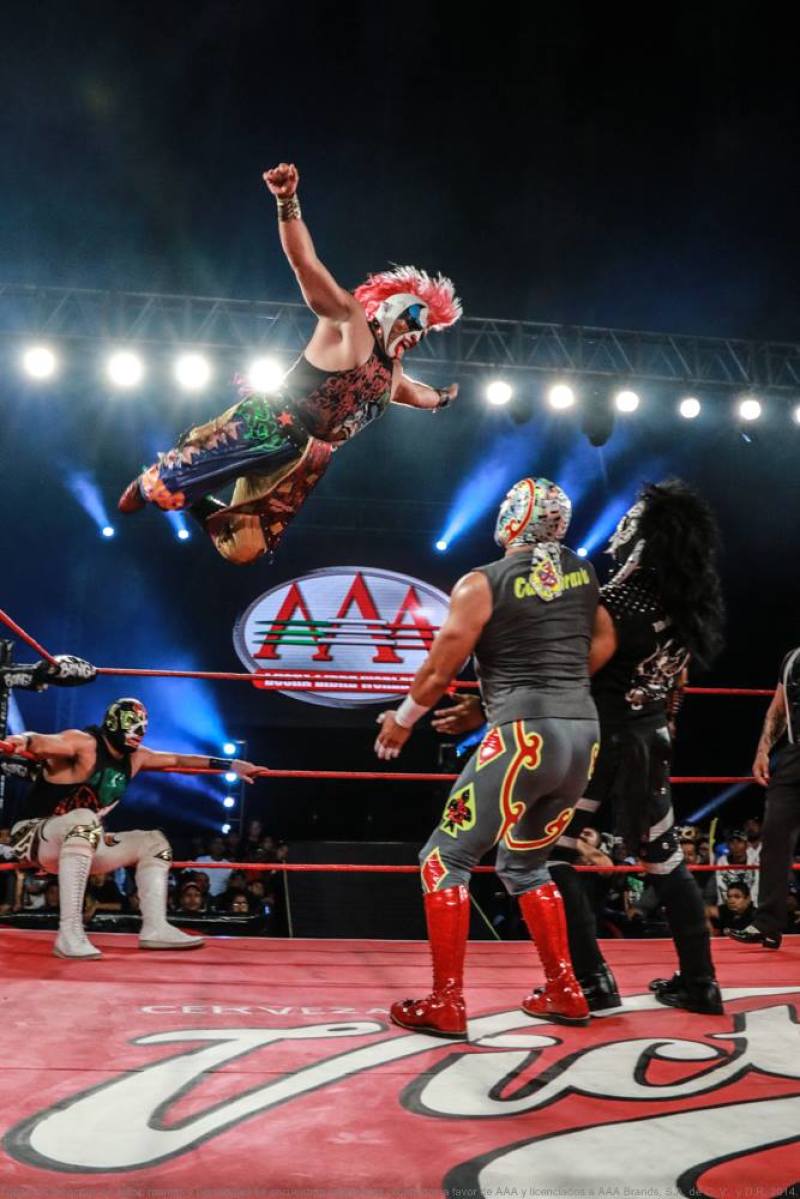WELCOME TO #MEXPLAINING, A SPACE WHERE MEXICANS EXPLAIN MÉXICO
We’ll be dropping a new #Mexplanation every month via our newsletter.
Photo @CMLL
/ LAS LUCHAS /
When the lights go out and the reflectors illuminate their bodies dressed in tight underpants, colorful masks and exotic capes, the audience goes insane; they are witnessing the real Mexican superheroes in flesh and blood. The Luchador’s pilgrimage to the ring unleashes whistles, applause, compliments, threats and, yes, a ton of groserías (swear words) that are as part of the ritual as anything else.
Couples, families, children, groups of friends, a few tourists, the popcorn and beer vendors: everyone is ready. The audience awaits the acclaimed announcement ... "They will fight two to three falls, sin límite de tiempo! (without a time limit)” The bell rings, and the show begins!
Source: Pinterest
The fighters execute a duel of jumps, flights and spectacular llaves (choke holds) that sometimes expel them from the ring. This is what characterizes Mexican wrestling, a version of professional wrestling, but that includes rapid submissions and elevated acrobatics. Today, it is one of the most colorful cultural phenomena in our country, and one proudly originated in CDMX.
The first wrestling performances came in the mid-nineteenth century, at the time of the French intervention. At that time it was a foreign exhibition but, when a man named Enrique Ugartechea became known as the first fighter made in Mexico at the beginning of the 20th century, a new fury for discipline was born.
Photo @CMLL
The characters hide their identity behind a mask, here arose the habit of betting: if a fighter loses, he has to take it off and he can never use it again. The fighters who don’t use a mask have to bet their hair.
Many have adopted names of cultural elements, such as El Santo , the most famous luchador of all, a character inspired by religious figures (“the saint”). Then there’s Alushe, a dwarf fighter who represents the Mayan elves who protect the cenotes, or underground rivers found throughout the Mayan Riviera.
El Santo Photo by La Silla Rota
The eternal battle between good and evil is divided into two historical camps: los rudos y los técnicos. The former represent the trap, the transgression of the rules, winning regardless of the means. The latter represent respect for the rules, fair play and honor.
The golden age of this sport was lived in the 1960s, when the fighters were true idols of the town. They appeared in spectacular ads, on television, were characterized as action figures and, of course, in dozens of movies. In the case of El Santo, his films won international awards and were recognized abroad for their kitsch element.
Photo Istock
These days, the Mexican wrestling functions are still presented in its original setting, the Arena Mexico, located in Colonia Doctores, a downtown neighborhood. Despite the passage of time, this cultural phenomena has managed to find new niche in its audience with middle class young people or hipsters, who now think of it as an alternative for a night out on the town, sharing drinks and laughs with friends.
More #Mexplanations






